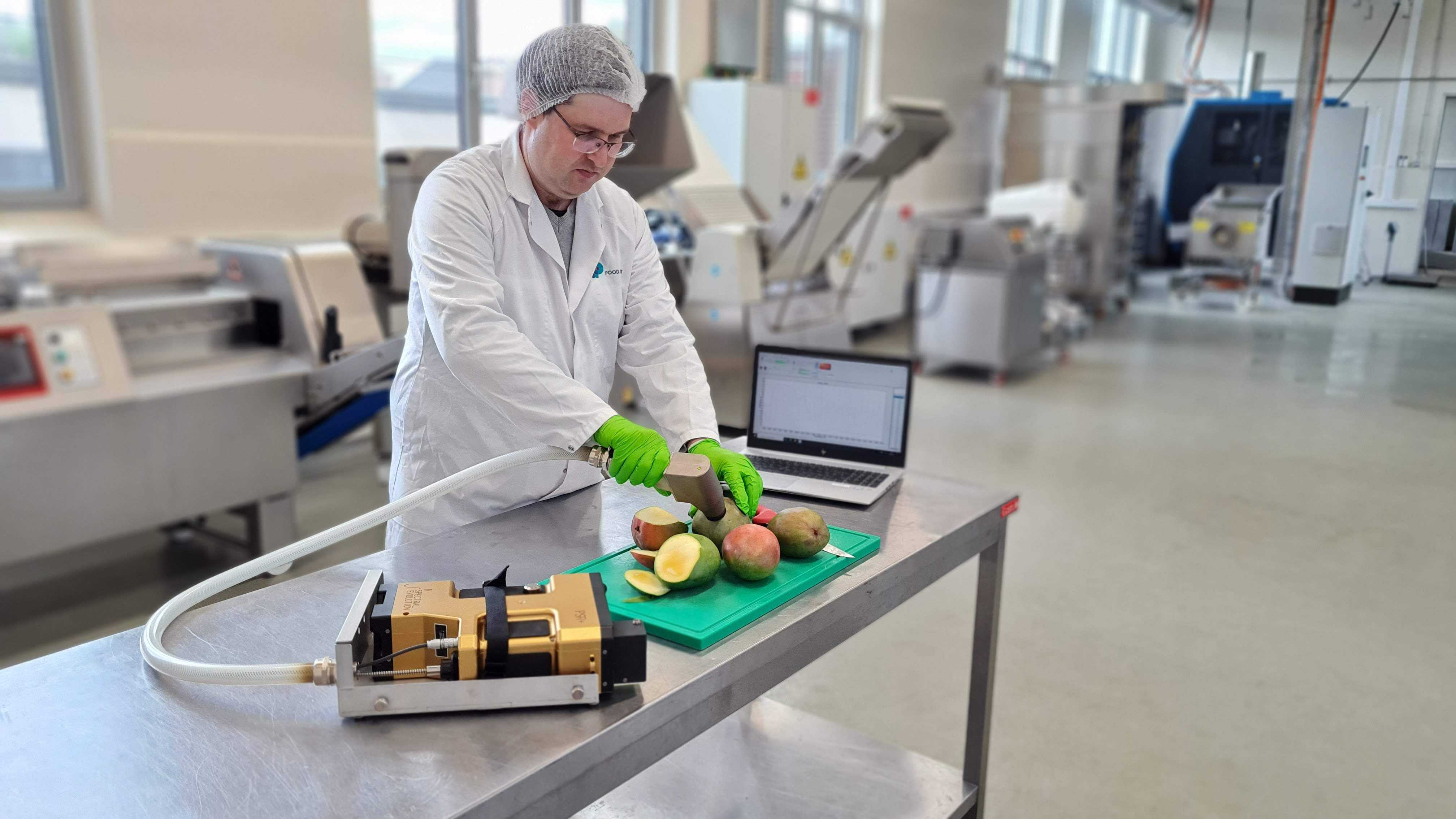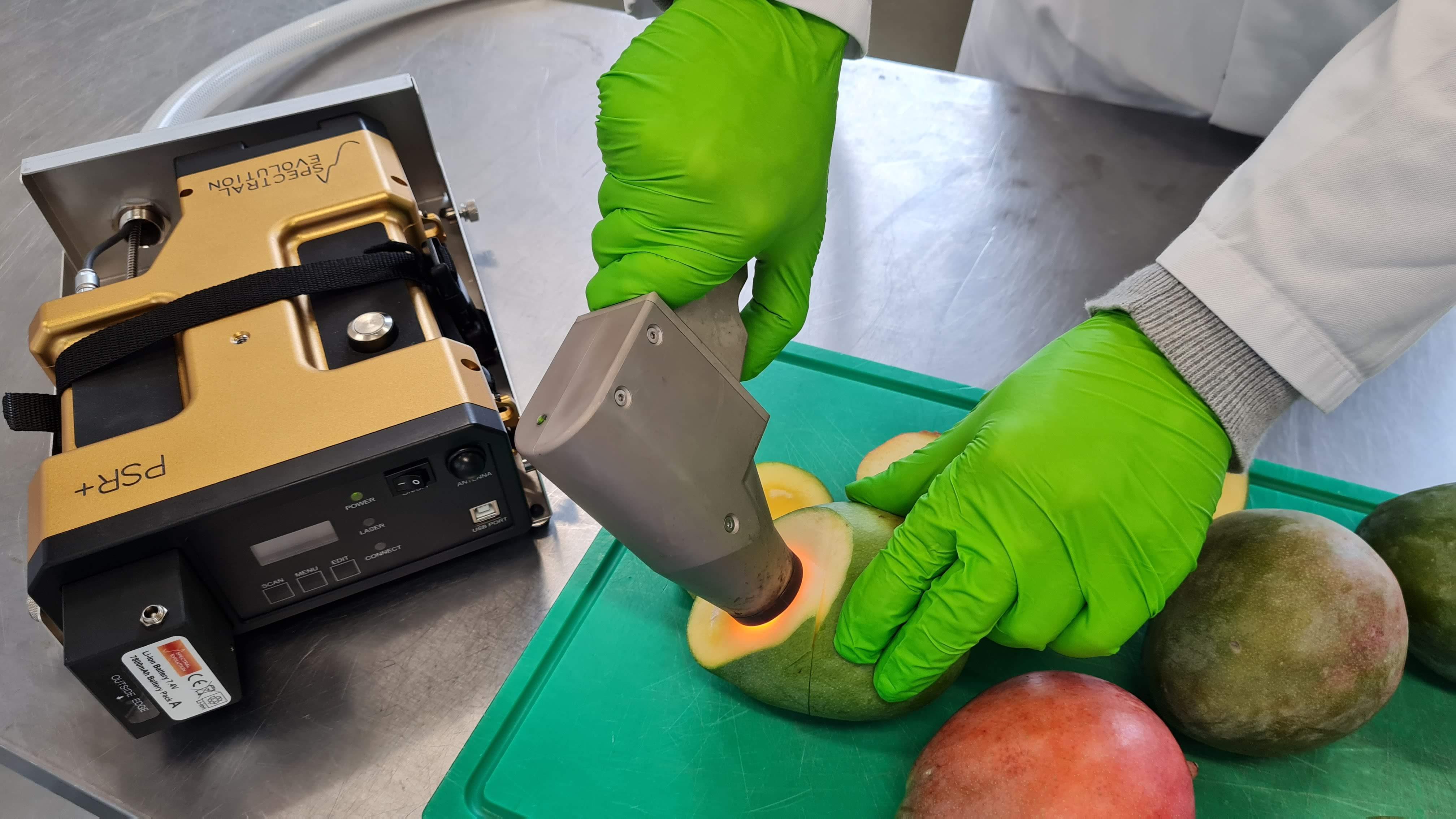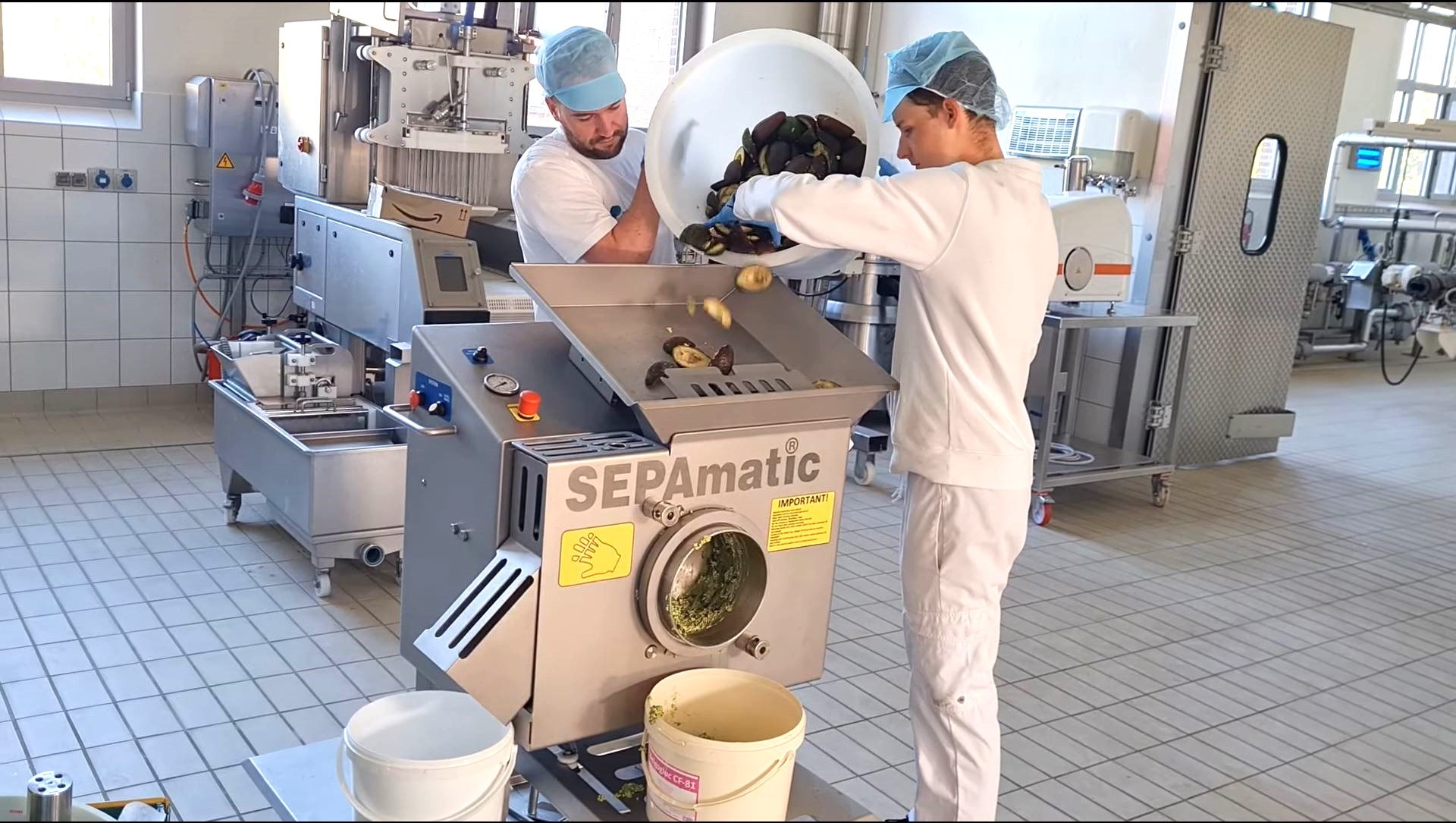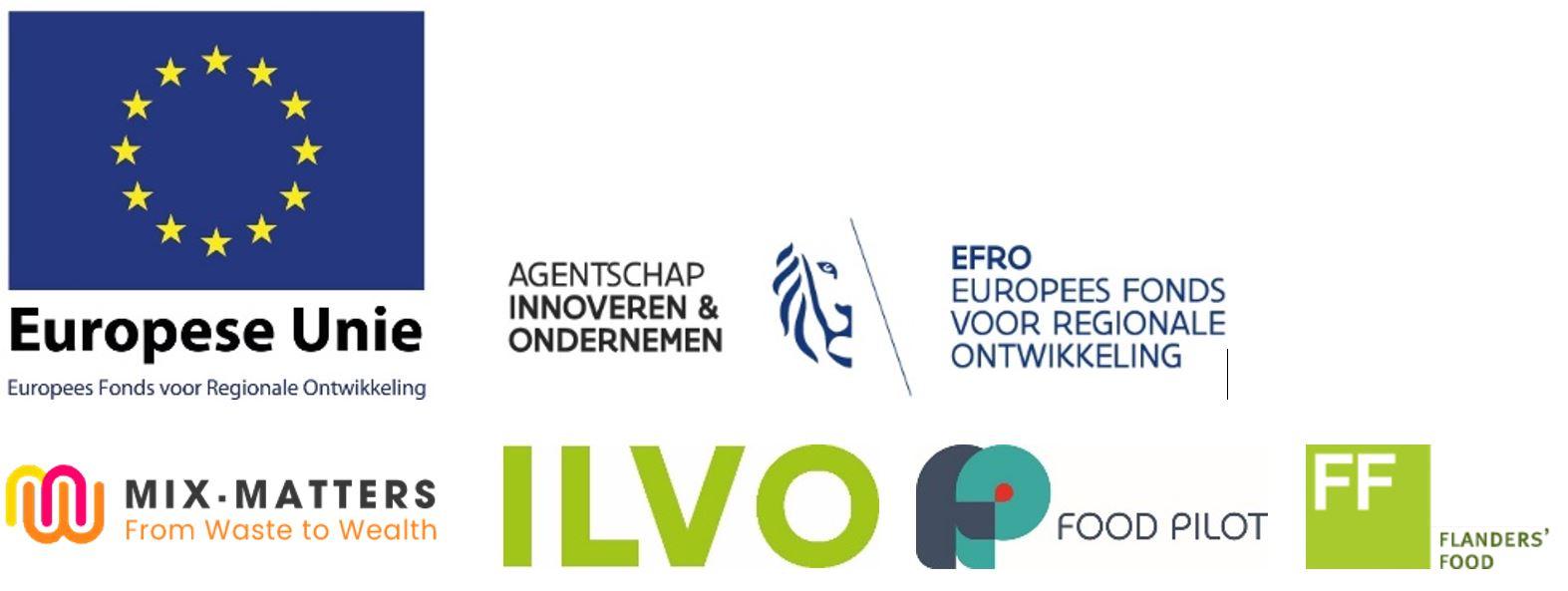General Development of rapid screening techniques for food processing and sorting - case "Contactless determination of composition of mixed by-products"
ILVO supports in the development of rapid and non-contact screening techniques. In doing so, it helps sensor producers develop or test new sensors and helps processing industries and integrators develop new or very specific applications. The ILVO Living Lab Agrifood Technology guides them in that issue.
Opportunities for automation, increased efficiency and quality improvement
During sorting or processing, it is indispensable to be able to estimate product characteristics of raw and processed materials. In-line sensors can screen a large flow of products on a large scale. Although slightly less accurate, this makes for faster intervention than periodic point measurements (e.g. one sample is measured every half hour). Automatic adjustment of processes becomes possible based on quality parameters such as moisture content, color, and composition. Processing companies already apply this to a certain extent, but many opportunities are still open for further automation. This optimizes the use of raw materials, minimizes losses - e.g. by avoiding wrong settings - and results in excellent product quality. Such screening systems are often based on spectral image processing, which predict product characteristics using AI. ILVO has expertise in building such models and prototyping solutions or integrations, and recently expanded its analysis capacity with a mobile spectrophotometer with the support of the ERDF and FIO in the Fast-Analab project.

Prototyping an in-line sensor. How?
A sensor integrated in-line into a production line must be robust, fast and affordable. The prior development pathway examines to what extent quality parameters can be linked to the spectral response and which wavelengths need to be discriminated in order to get the right response.
ILVO invested in a new spectrophotometer for research purposes. This research device is broadly applicable for pilot tests with companies because of its broad wavelength range with high resolution. In such a test, the feasibility of a specific commercially available sensor in predicting quality parameter(s) is examined. A specific sensor always contains a limited set of wavelengths. With the broadly applicable research device, it can be examined whether a reliable predictive model can be built based on well-defined wavelengths. Since the research device can measure over the entire wavelength range, it has the capacity to work out the applications (and feasibility thereof) of endless commercial sensors.Through the technique of Machine Learning - a form of AI - models are generated that link spectral data to product quality parameters previously measured in the lab. Before implementation of the sensor in practice, the model is then trained with practice-relevant data, and retrained on a regular basis, to keep the estimates optimally reliable.

Promising application: Contactless determination of composition of mixed by-products
In the framework of the European Mix Matters research project, ILVO is exploring the possibility of contactless determination of the composition of mixed by-products. The project focuses on the maximum valorization of large volumes of available vegetable by-products which contain valuable components, but appear heterogeneously mixed which makes their valorization difficult. By-products being investigated by ILVO are unsold mixed fruit and vegetable streams from wholesalers, retail and food companies.
For these experiments, product batches are created with the Food Pilot's pilot processing machines. Samples of the fractions obtained after processing are taken. Product parameters - such as chemical composition - are determined using analytical reference methods. And spectral data is measured over a wide wavelength range with the research apparatus described above. Both data sets are linked together resulting in a regression or classification model. Derivations can then be made to estimate the ability of various commercially available in-line sensors to capture the necessary data. This provides the basis for an informed choice of an in-line sensor that can be integrated into production. Next, a phase to train the model using data capture in production takes place.After the training phase, based on that model, the spectral sensor can (without contact and non-destructively) estimate the product parameter e.g. fiber or moisture content. That information helps the processor make an informed choice on how best to further process a specific product stream, with a view on which valorization avenues have the greatest potential. For example, sugar-rich liquid fractions can be used as a C source in fermentation after a preservation treatment. The fiber-rich press cake obtained after pressing fruit or veg with a spiral filter press can be dried and used as a fiber concentrate in food products.


Companies can submit their challenges
ILVO always works based on real cases from companies. Submit your challenge to be addressed in our collective research projects, or in a one-on-one confidential track.
Implemented investment in the Fast-analab project.
Besides the spectrophotometer, the ERDF project also invested in 2 other analytical techniques, namely an LC-HR-MS to characterize new proteins, and an N2O gas analyzer to analyze soil emissions. The project was made possible by the financial support of ERDF (344 000 euros) and FIO (86 000 euros).
Contact
Bart.VanDroogenbroeck@ilvo.vlaanderen.be
